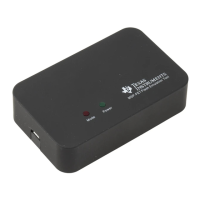Debug Probes Hardware and Software
www.ti.com
34
SLAU647F–July 2015–Revised December 2016
Submit Documentation Feedback
Copyright © 2015–2016, Texas Instruments Incorporated
MSP Debuggers
Figure 29. MSP-FET430UIF USB Interface, Schematic (4 of 4)

